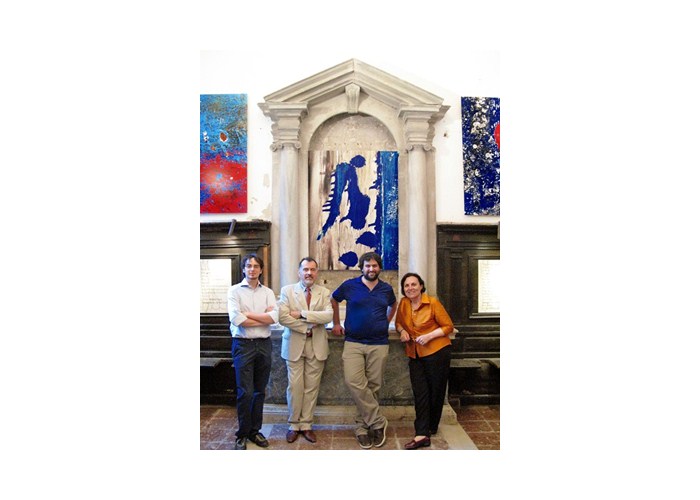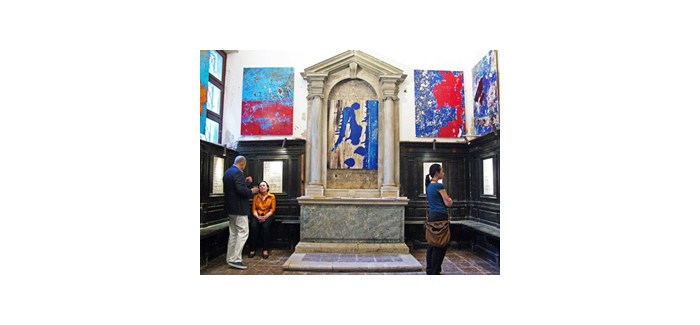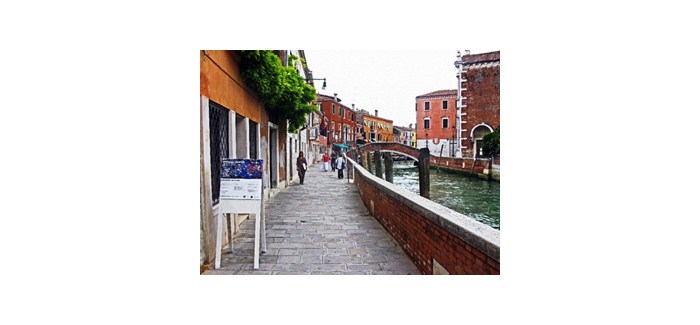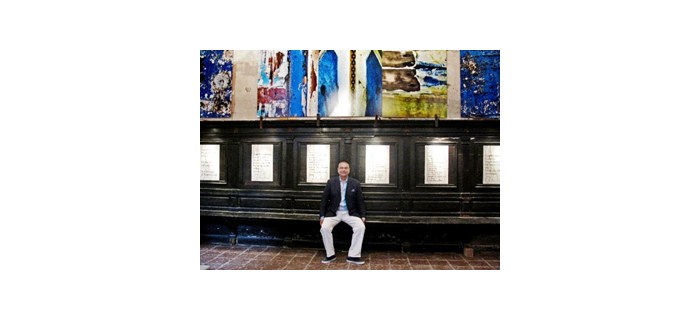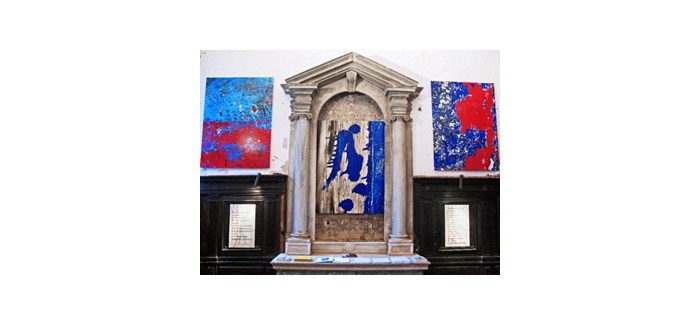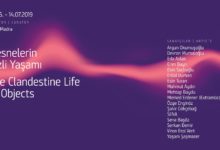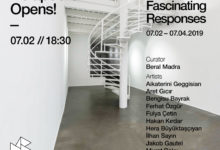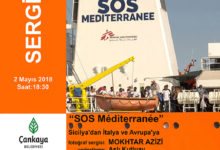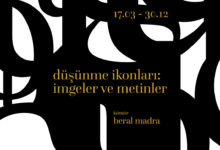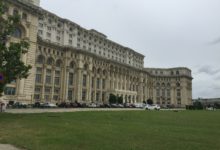KADER DENİZİ
FOTOĞRAF-VİDEO-ŞİİR SERGİSİ
MEHMET GÜNYELİ, BEJAN MATUR
HAZİRAN-TEMMUZ 2011
AÇILIŞ 31 MAYIS, 18.00
Oratorio di san Ludovico, VENEDİK
Küratör: Beral Madra
BİR BM ÇAĞDAŞ SANAT MERKEZİ VE NUOVA ICONA SERGİSİ
WWW.SEAOFFATE-VENICE.BLOGSPOT.COM
Mehmet Günyeli ve Bejan Matur’un “Kader Denizi” başlığı altında sunduğu sergi İstanbul 2010 Avrupa Kültür başkenti Sanat Limanı’nda 2010 Temmuz ayında sergilendi.
Günümüz dünyasının en ağır dramlarından olan Mültecilik konusunu işleyen sergi, Mehmet Günyeli’nin soyut fotoğrafları ve Bejan Matur’un bir tragedya gibi kurguladığı şiirlerinden oluşuyor. Kaçak göçmenleri taşıyan tekneleri soyut bir anlatım diliyle belgeleyen fotoğraflara, Matur’un şiiri eşlik ediyor.
Mehmet Günyeli’nin, minimal fotoğraf diliyle oluşan kareler, kaçak göçmenlerin terk ettikleri teknelerin üstündeki renkli boya izlerini içeriyor. Bu renkli ve soyut izler kaçak göçmenlerin çok farklı kültürleri ve adsızlığı ile örtüşüyor. Görsel malzemenin sağladığı dolaylı ve şiirsel anlatım izleyicinin zihninde bu kadersizliğe ilişkin kalıcı izler bırakmayı amaçlıyor.
Günyeli ve Matur’un işbirliği, günümüzün siyasal ve ekonomik krizlerinin bir sonucu olan “insan ticareti” denilen bu suça ortak eleştirel bir bakış öneriyor.
Sergi 54. Venedik Bienali sırasında, Venedik’te Nuova İcona Galerisinin yönetiminde sanata tahsis edilmiş kutsal bir mekan olan Oratorio di san Ludovico’da, uluslararası izleyicinin dikkatine sunuluyor.
SEA OF FATE
MEHMET GÜNYELİ ANA BEJAN MATUR
AN EXHIBITION OF PHOTOGRAPHY, POETRY AND VIDEO
JUNE-JULY 2011
OPENING 31 MAY, 6 PM
Oratorio di san Ludovico, VENICE
CURATOR: Beral Madra
A BM CONTEMPORARY ART ANA NUOVA ICONA EXHIBITION
WWW.SEAOFFATE-VENİCE.BLOGSPOT.COM
The exhibition of Mehmet Günyeli and Bejan Matur entitled “Sea of Fate” has been realized in July 2010, on the occasion of İstanbul European Capital of Culture.
The exhibition presents a series of abstract photography by Mehmet Günyeli and poems of Bejan Matur, conceived and created on one of the most tragic human drama of our age, the refugee and illegal human traffic. Bejan Matur’s epic poems accompany the documentary photographs of Günyeli which show the surface of the boats that have transported the victims over the Aegean and Mediterranean Sea. The bold colours, traces, stains of the boats and their abstract impression comply with the multi-cultural origins as well as the anonymity of these ill-fated people. The artists’ intention is to attract the attention of the Venice Biennale audiences to the most crucial problems of political and economic crisis with a critical interpretation.
The exhibition curated by Beral Madra is being realized in Venice June-July 2011, in Oratorio san Ludovico, the exhibition venue of Nuova Icona, during the 54th Venice Biennale.
THOUGHTS on the SEA of FATE
In the current aesthetics, painting-photography relationship and correlation gets more and more intricate. We are not so persuaded which one influences or replaces the other. We can clearly see that photography is used as a reference by many paintings; and we believe that’s very usual. The artist documents his/her environment and the world with photography and reinterprets this act in paintings. Or we see the vice versa, where photograph is rendered into a painting through certain interventions. Another process is documenting certain images and natural coincidental or artificial things, found or discovered as “readymade paintings” with photography and utilizing these photographs to reflect an artistic discourse of presentation. These processes take up an important place within today’s art theory and debates. In Modernism, we find examples of almost all of these aesthetical processes. We are aware of the fact that photography within the radically pioneering movements initiated by Dada is a very effective visual material. Today, 180 years after its discovery, photograph has become a very dilemmatic visual material. The possibility of intervening in it with digital techniques demoted the one-hundred-year-old plausibility and attestation of the photograph; on the other hand, the art production of the past 50 years canonized photography as a dominant tool of expression. On the one hand, we have an objectionable material, a must within the consumption culture channeling and controlling our daily lives against our wills, on the other hand there is a trustable material, which has deeply affected the thought system of the past 50 years and created the “visual culture”. Here, we need a different way of grounding and awareness in order to make an accurate differentiation and ward off the impact of what’s objectionable. This is a power and skill, which could be maintained though using photography as an art.
It is quite possible to view these photos of Mehmet Günyeli, -the shots of the surfaces of deserted boats using cutting-edge technology, reflecting nothing but colors and patterns-, as paintings. Almost all of them have a striking resemblance to the abstract works, produced during the Modernism and Post-modernism eras. Yet, this abstracts were not manmade, but created ipso facto. What makes these works “abstract” is the artist’s attention and standpoint in discovering them and the viewer’s angle in assessing these works. More importantly, it is our knowledge about painting production for the second half of 20th century which gives these photography the value of painting. Due to the expressionist pattern and nature in these photographs, we need to remember the abstract paintings of 1980s, such as the abstract paintings by Gerhard Richter and Per Kirkeby, two pioneers of the German Post-modernism or the Italian Trans-avant-gardes of Enzo Cucci.
In early 1980s Richter said “Abstract paintings are fictive models because they show a reality we can neither see nor describe, but whose existence we can surmise” (*). Many photograph-painting in the exhibition associate Richter’s “untitled” oil paintings, he market with numbers. For the viewer, who does not see and cannot define what these photo-paintings really are, -as the viewer believes that the artist must be telling something- these works, nonetheless, make reference to a reality they have to admit. However, these abstract-photographs are in fact making reference to a reality. The clues of this reality are found in the accompanying poetry and in the video image, out of which are pouring stories and numerous names. The poems are echoing the despair, statelessness, loneliness, longing and the state of being lost, hopeful and hopeless; the names, on the other hand, are the reality behind these photos. They signify people, who were degraded to statistics and figures and who have become the subjects of the bureaucratic processes.
Today’s art is generally assessing problems with a realistic manner. By using the images pertaining to all the contents and elements creating the problem, and by using these contents and elements as a metaphor, art is questioning or making the viewer question or scrutinize these problems. In artworks, we see all the images we often see in daily life. These images are often the life itself, insomuch that we suspect if they are artworks. Or conversely, they are accepted as artworks only when they are seen in an exhibition.
On the other hand, some images do not reflect the relationship with the reality; on the contrary, they conceal it. There may be a couple of reasons for that: The reality, the artwork is based on, is too striking, painful or loathsome to be shown; or the artist does not want to hurt the subject of the reality he/she wants to point to. This is exactly what makes these abstract photographs so valuable. Like many other artists often do, the artists could well find these immigrants and shoot their pictures or make a video-interview with them. Today, we can find countless examples of such works. For example in a one of the Venice Biennales, in order to draw attention to illegal immigrants in Venice, Santiago Sierra paid a daily fee to them and had their hair dyed blond. He trotted these people out to trigger awareness.
Legal and illegal immigration is the most important political, social and economic problem of all countries. Especially the Mediterranean has become a region, which falls short in its efforts towards handling this problem. The region does not/is unable to find proactive, constructive and rehabilitative solutions. Besides human rights are being violated. Many artists produced works underlining this problem… Among the most significant examples are: Ursula Bieman, who deciphered the human trafficking routes in the Sahara, Kalliopi Lemos, who exhibited the boats deserted on the Aegean Islands (two of these boats are lying in front of Santral Istanbul). Moreover, the two videos by Farocki, titled “Camps for Foreigners in Europe” and “Mourir aux Portes de l’Europe” (Dying at the doors of Europe), draw attention to the illegal immigrants who were drowned in the sea and poisoned while travelling hidden in the truck haulages.
In most of these works, a direct method was not preferred; on the contrary, the artists made an implicit definition and a profound research. This implicit definition is not only out of respect to the tragedy of these people, but also is a reference to the silence and indifference of the society and authorities towards the problem. Similarly, Günyeli’s photographs are examples of such a presentation.
On the other hand, in this exhibition, these silent images are accompanied by “words”. Against the language of today’s communication systems, politics and economy, echoing authority, command and violence, the poems of Bejan Matur stand out with a style highlighting freedom, understanding, sensitivity and refinement. Today we are frequently using the phrase “where words fall short”. And across them we are placing paintings titled “No comment”, assuming that the masses would be commenting on them. Well, this method is not fruitful at all. It is very difficult for people to get out of the power systems. Then again, we do observe that the words criticizing these systems have not faded away. In this perspective, the word and painting collaboration in this exhibition gains a vital value. These are poems written on behalf of people who can never have their voices heard and whose voices we never have time to hear out.
These photographs and poems are presented for the first time to the attention of viewers at Sanat Limanı, a public exhibition hall, opened by the Istanbul 2010 European Capital of Culture Agency to meet the needs of the contemporary art circles in Istanbul.
Beral Madra, August 2010
*CATALOGUE OF CARNEGIE INTERNATIONAL 1985, PRESTEL VERLAG, p.200
“ görsel kültür”ü yaratan güvenilir bir malzeme. Burada ayrım yapabilmek ve sakıncalı olanın etkisinden kaçabilmek için farklı bir bilgilenme ve bilinçlenme gerekiyor ki bu fotoğrafın sanat olarak kullanımından yararlanarak sağlanabilecek bir güç ve beceridir.


